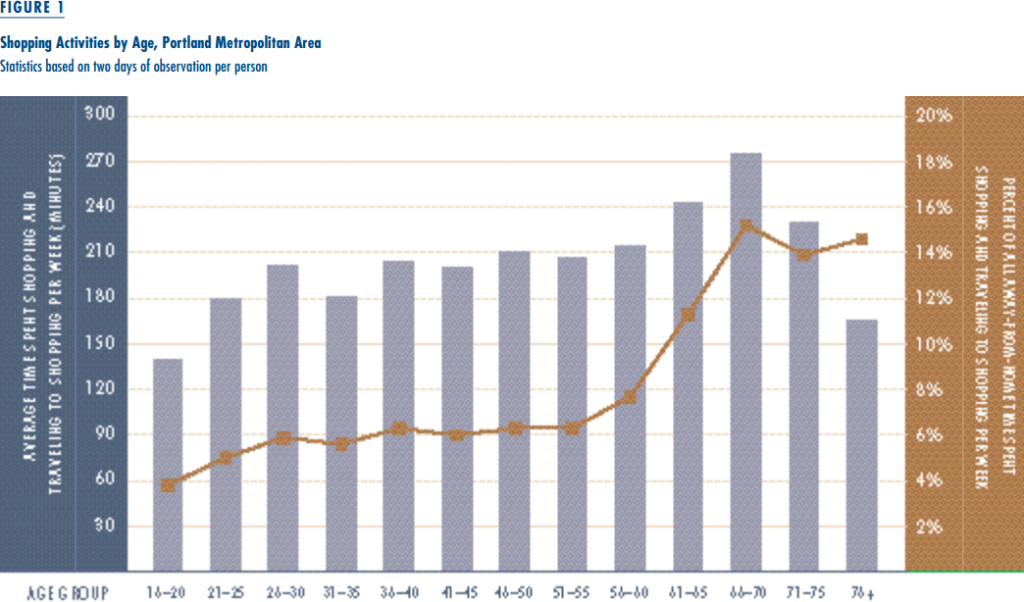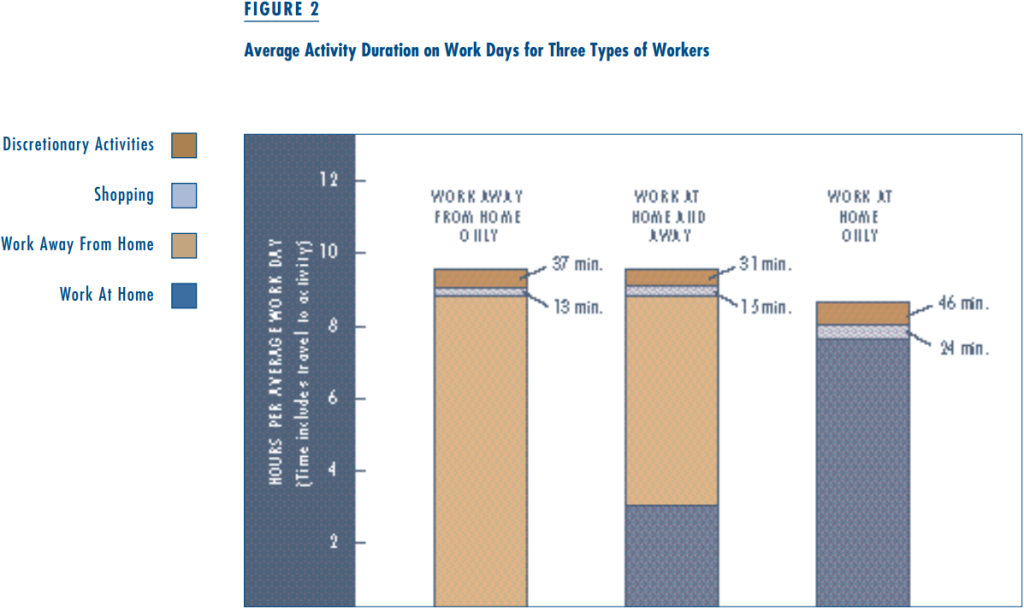[sharelines]Home shoppers are a niche but growing market.
Home shopping is not a novelty. Our parents may have received milk at the front door, or invited the Avon lady or an encyclopedia salesman to step inside. Nowadays we pick up the phone to order pizza or to buy clothing from catalogs, or we receive weekly deliveries of organic produce. Today’s home shopping orders are usually transmitted by mail or telephone. Most people shop from home only occasionally, for example, if they can’t find items locally or if the items are discounted. However, the new electronic media may be the impetus for a wave of online rather than in-store shopping. In 1996 about $300 million worth of merchandise— from holiday gifts to software to wine—was sold via the Internet.
Wave of the Future?
Interactive media seem well-suited to future shopping because they combine the searching and computing power of the computer, the real-time interaction of the phone, and the visual richness of television—all in the privacy of one’s home. Projections for electronic home shopping range from $5 billion to $50 billion by 2005. Forecasts vary so widely because expectations are uncertain, both for the speed and capacity of home-based broadband communication technology and for public perceptions about the security of online payment.
Hardware prerequisites alone will not determine the scale of future home shopping. The telling factor is how people will choose to use their time among the activity choices available to them. Historically, there has been a close relationship between growth of the retail sector and available forms of transportation and communication. About 150 years ago tandem development of rail transit and the telegraph facilitated growth of large central stores, allowing customers to make purchases and shopkeepers to maintain inventories. Development of the automobile and other factors later led stores to choose suburban locations, while shoppers enjoyed conveniences like free parking. Today about one trip in five involves shopping. But will the growth of the Internet arrest this trend and lead to new retail options that do not rely so heavily on travel?
Electronic home shopping eliminates travel to a store, but not the need for home delivery of goods. During this century home delivery of basic items such as milk has gradually declined because consumers find it more convenient and cost-effective to shop for these goods at stores. Catalog  shopping, which depends on home-delivery providers such as UPS and the postal service, still represents only about four percent of total retail sales. But with delivery services providing a significant advantage to people with limited mobility, shopping from home may become more common.
shopping, which depends on home-delivery providers such as UPS and the postal service, still represents only about four percent of total retail sales. But with delivery services providing a significant advantage to people with limited mobility, shopping from home may become more common.
Most electronic home shopping is done by people with high incomes and limited time—for example, upwardly mobile working women with children. Busy professionals increasingly might choose electronic home shopping because it can save both travel time and time spent in stores. But there lurks a mismatch between electronic home shopping and this group: Since they are so busy, they are also less likely to be home to receive deliveries.
Several solutions have been proposed for home delivery, like retrofitting the exterior of homes with refrigerators or having customers pick up goods at a local or regional commercial center. The latter solution may meet with customer resistance, however, because it would require a special trip to a town center, where parking may be hard to find.
Many people enjoy shopping in stores for its recreational advantages. Shopping trips do not necessarily involve spending money, for people go to stores to learn about new products, to follow fashion trends, to compare items or prices, to see what other people buy, or simply to socialize outside the home.
These social aspects of in-store shopping might discourage people from shopping online. Some analysts predict that online shopping will be more likely for routine, inexpensive purchases like laundry detergent and light bulbs, rather than for clothing or jewelry. Perhaps expensive, nonstandardized purchases require that consumers be able to touch the goods and look the retailer in the eye.
Still, many services and products can be delivered digitally to households. Airline tickets, newspapers, CD music, and software can be transmitted as digital bits. Consumers may prefer to shop for these products online because doing so eliminates trips, offers a wide selection, or provides at-home convenience and instantaneous delivery. Our studies in London suggest that many suppliers there prefer to sell online because it reduces their cost of retail transactions. They may be able to reduce the costs of building leases, employee salaries, and commissions for agents. The selling procedure can be fully automated, akin to the way ATM machines have automated many of our personal contacts with banks.
Our research into transportation and telecommunication interactions finds that shopping patterns differ with buyers’ age, gender, and available time. Retired persons without scheduled work spend more time shopping. We also find surprisingly few differences between the UK and the US in terms of total time spent each week shopping and traveling to shopping, although the time spent in travel and actual shopping is different: US shoppers spend more time traveling to stores; UK shoppers spend more time in stores.
We wondered whether there are segments of the population that find traveling to stores burdensome, and what would happen if people did not have to travel to shop? Might a travel-free option encourage development of electronic home shopping? The answer: It depends.
Activity Analysis
Time spent traveling to and from shopping is just one component of the total time a person spends away from home on any given day. So we ask whether time spent for shopping travel competes with other out-of-home activities. For example, if people can shop from home and do not have to travel to stores, will they use part or all of this saved travel time for other out-of-home activities, such as recreation, errands, or even more shopping? Further, to what extent will participation in other activities generate new travel?
Data from an activity and travel survey conducted by the regional planning authority in Portland, Oregon, reveals how people use their time away from home. The 1994-1995 survey is based on activity diaries for almost 7,000 persons in 4,000 households. The diaries comprise information on all out-of-home activities and travel over a two-day period. When analyzing trade-offs between activities, it is instructive to categorize activities hierarchically, on a scale from compulsory to elective, with subsistence activities (e.g., work) followed by household-maintenance activities, followed by discretionary activities (e.g., sports, recreation, and social visits).
Traditionally, activity models have classified shopping as a maintenance activity, but we recognize that it has both maintenance and discretionary components, depending on the shoppers and the items they seek. A weekly trip to the grocery story may be viewed as a maintenance activity, whereas an afternoon spent browsing at the mall may be a discretionary, recreational activity. Accordingly, we classify shopping trips as a hybrid activity, combining both maintenance and discretionary components. We also identify time spent traveling to stores in order to compare activity patterns of people with short shopping travel time to those of people with long shopping travel time.
We built a statistical model to forecast the extent to which saved shopping travel time will be converted into one of the following:
- more out-of-home maintenance activities
- more out-of-home discretionary activities
- more out-of-home shopping activities
- more in-home activities, of all types
Our model also incorporates statistical controls for the number and ages of household members, number of drivers in the household, income, and car ownership. We know, for example, that households with many family members have to shop often, so we statistically control for this effect.
We are interested in comparing people who work four or more hours at home with those who work for a similar period at nonhome job locations. Our hypothesis holds that in-home workers shop more because they have flexible schedules and more time available from saved commuting time. Further, shopping may provide recreation and opportunities for socializing outside the home.
We find at-home workers spend significantly more time shopping than do away-from-home workers or those with mixed at-home and away-from-home schedules. Those who work away from home spend only 35 percent of their discretionary time shopping, while those who work at home shop during 52 percent of t heir time. While this suggests that at-home workers shop as a diversion, we cannot rule out the competing hypothesis that in-home workers spend more time traveling to and from shopping because they can’t chain their shopping trips with the commute to and from work.
heir time. While this suggests that at-home workers shop as a diversion, we cannot rule out the competing hypothesis that in-home workers spend more time traveling to and from shopping because they can’t chain their shopping trips with the commute to and from work.
We hypothesize that working women will favor home shopping, because it would let them redirect saved travel time toward other out-of-home household tasks that generally fall on women: additional shopping, chores such as visits to post offices and dry cleaners, and chauffeuring children to and from school and activities. It seems that busy working women struggle to find enough time for all their household errands. Our model predicts that working women will choose to engage in additional maintenance activities if they are able to save time by doing some shopping from home.
The growth of home shopping is not occurring in isolation. As it grows, so will concomitant online activities, such as  household maintenance activities like home banking. New electronic services can reduce time spent in maintenance activities, produce time savings for busy people, and influence when and how busy people choose to travel. Our results present something of a paradox for the growth of future home shopping. On one hand, people currently at home during the day enjoy a variety of activities, including shopping outside the home. Although they may be an ideal market for home shopping, being at-home to receive deliveries, they may not favor home shopping because they seek diversions outside the home. Working women, on the other hand, favor home shopping because of the time pressures they face, but they find it difficult to schedule package deliveries.
household maintenance activities like home banking. New electronic services can reduce time spent in maintenance activities, produce time savings for busy people, and influence when and how busy people choose to travel. Our results present something of a paradox for the growth of future home shopping. On one hand, people currently at home during the day enjoy a variety of activities, including shopping outside the home. Although they may be an ideal market for home shopping, being at-home to receive deliveries, they may not favor home shopping because they seek diversions outside the home. Working women, on the other hand, favor home shopping because of the time pressures they face, but they find it difficult to schedule package deliveries.
Given these obstacles, consumer home shopping will probably remain a small niche market for the next few years. Still, when projecting the market for home shopping, we must consider the benefits of this option: no hassles with traffic or parking, instantaneous information on current stock, a wide selection of items, and often lower cost. In many ways, electronic shopping holds advantages over in-store shopping. But only time will tell whether future consumers will commence shopping trips with keyboards or car keys.
Further Readings
Golob, Thomas F. and Michael McNally, “A Model of Household Interactions in Activity Participation and the Derived Demand for Travel,” Transportation Research B, vol. 31, 1997, pp. 177-194.
Gould, Jane and Thomas F. Golob, “Shopping Without Travel or Travel Without Shopping? An Investigation of Electronic Home Shopping,” Transport Reviews, vol. 17, 1997, pp. 355-376.
Mokhtarian, Patricia, “A Typology of Relationships Between Telecommunications and Transportation,” Transportation Research A, vol. 24, 1990, pp. 231-242.
Salomon, Ilan and Frank Koppelman, “A Framework for Studying Teleshopping Versus Store Shopping,” Transportation Research A, vol. 22, 1988, vol. 247-255.
Sahay, Arvind, Jane Gould, and Patrick Barwise, “Threats and Opportunities from New Interactive Media,” European Journal of Marketing, forthcoming.
Tauber, Edward, “Why Do People Shop?” Journal of Marketing, vol. 36, 1972, pp. 46-48.








